Today I had breakfast, said goodbye to my hosts and headed off to Chefchauoen in the Rif mountains in the north of Morocco. It was an uneventful drive of about three and half hours. The road started on small country roads, where I had to dodge potholes, goats, donkeys and people – before I reached the main National 13. This was wider, but I still had to dodge potholes, donkeys and people – fewer goats though. The road first went along rolling, plains – despite the landscape looking very dry, there seemed to be a lot of agriculture. Although I had yet to see a cloud in Morocco, I suppose it must rain here sometimes.

The road then climbed into the pretty Rif mountains and became greener. I stopped at a roadside service station and found that the coffee served there was just as good as in the cafes in big cities. Soon my destination, the blue city of Chefchaouen, came into sight, nestling amongst some impressive mountains.

I found my hotel easily, but my room was not yet ready, so I chilled by the pool with some mint tea. The hotel owners kindly upgraded me to a suite. Maybe they have been following my blog, recognised me (easy to spot a travelling bear in Morocco!) and wanted me to mention them. Whatever the case I can confirm that the Dar Erchauoen is a great address as my photos confirm:



I enjoyed my suite, waiting for the intense heat of the early afternoon to pass and then set off in the slightly-less-intense heat of the late afternoon armed with a bottle of water and a hat. Chefchaouen was founded in 1471 as a base for Berber tribes to attack European settlements on the coast. It then became a refuge for Muslim and Jewish refugees fleeing Spain after the fall of Granada; the new settlers built their houses in the Andalusian style. At some point, the residents starting painting their houses blue rather than the traditional white – no one knows why. The town was closed to non-Muslims until occupied by the Spanish in 1920, who stayed (with one interruption) until Morocco’s independence in 1956. Chefchaouen retains a very Spanish appearance, and most of the road names are shown in both Arabic and Spanish.
Today Chefchaouen is a very popular tourist destination for foreigners and Moroccans alike – maybe too popular in the summer and at weekends. My hotel was on a hill at the edge of the town, and it was a pleasant stroll downhill to reach a small, fast-flowing river that provides one of the centres of activity for the area. Children bathed, and many stalls sold souvenirs to tourists. There were many orange juice sellers – one of whom had found an ingenious way to keep his oranges cool.
One souvenir that all the shops were selling was paintings of blue houses – compared to the remarkable craftsmanship I had seen elsewhere in Morocco, these paintings were of surprisingly poor quality. Much better to take photos, which was my main occupation as I wondered through the shady small streets of the medina…..
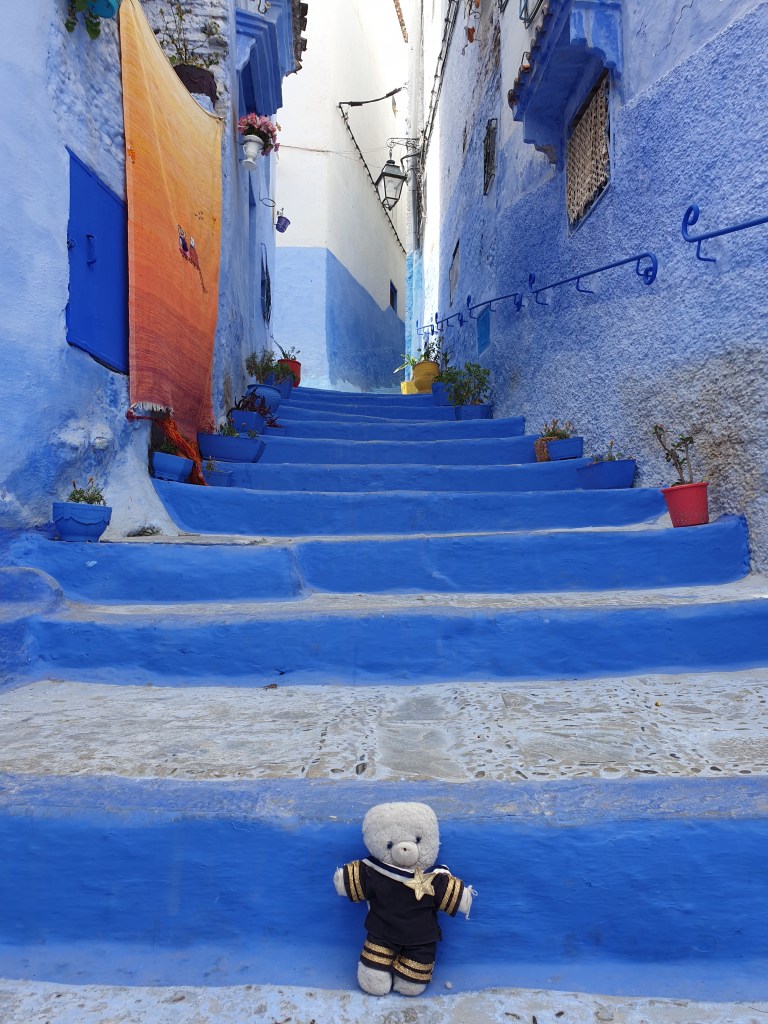
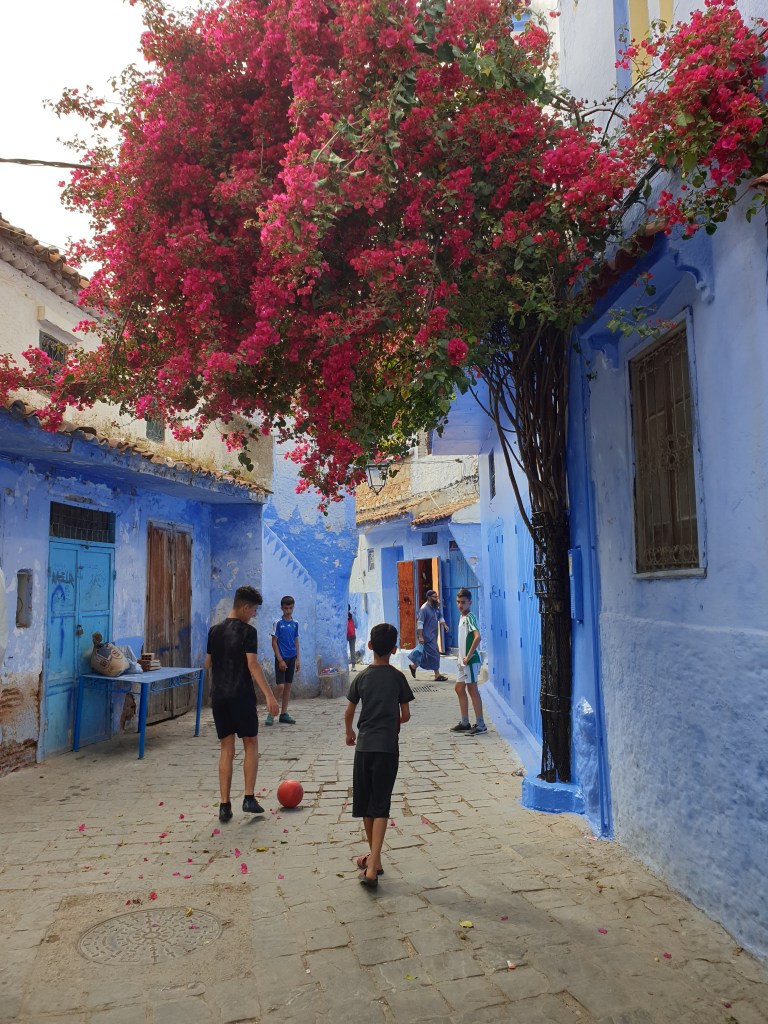
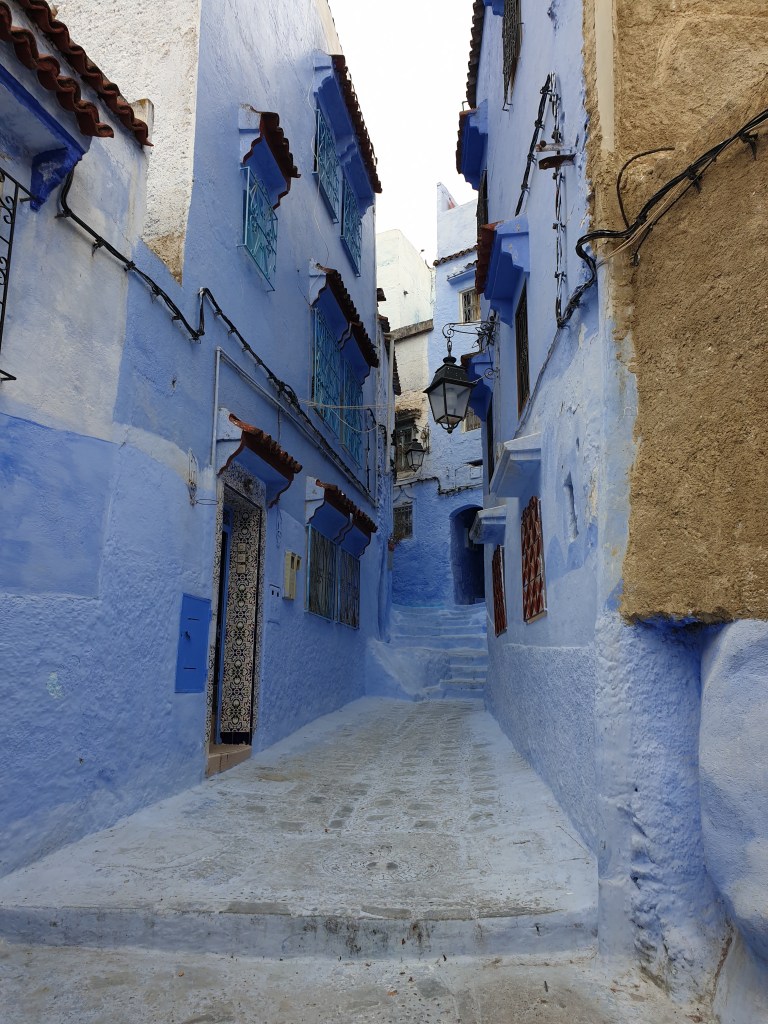

After wandering through the blue medina, I reached the main square and Kasbah, which provided brown relief from all that blue………
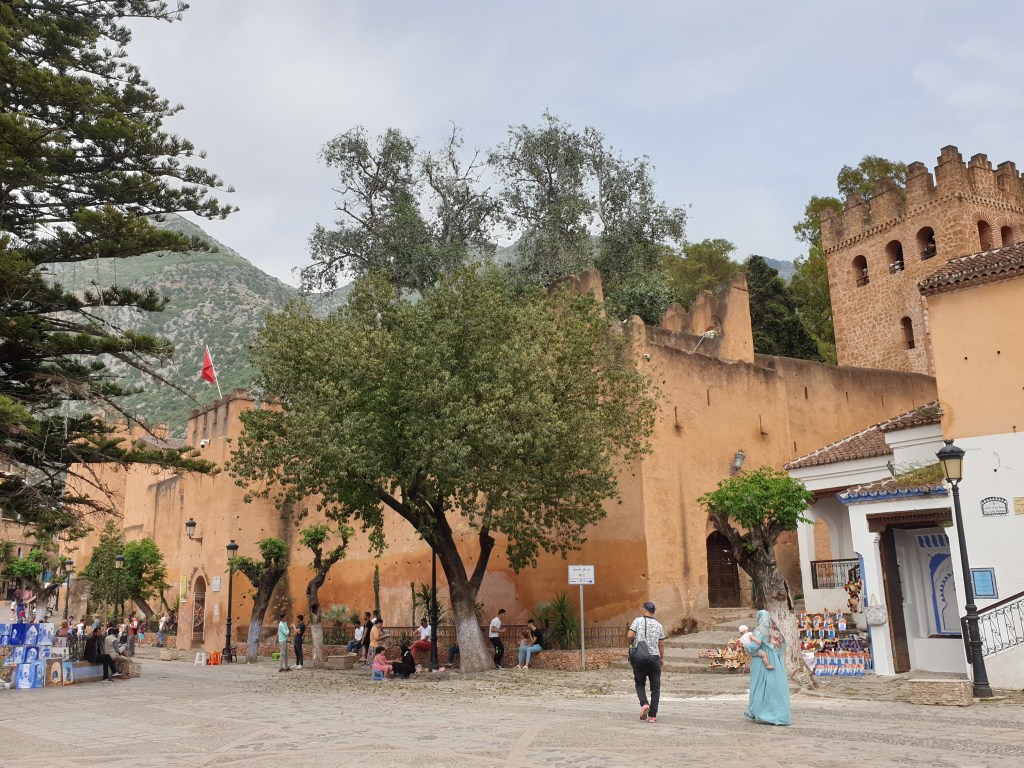
Then I headed to Café Clock, a local institution, with a terrace which gives excellent views of the town.
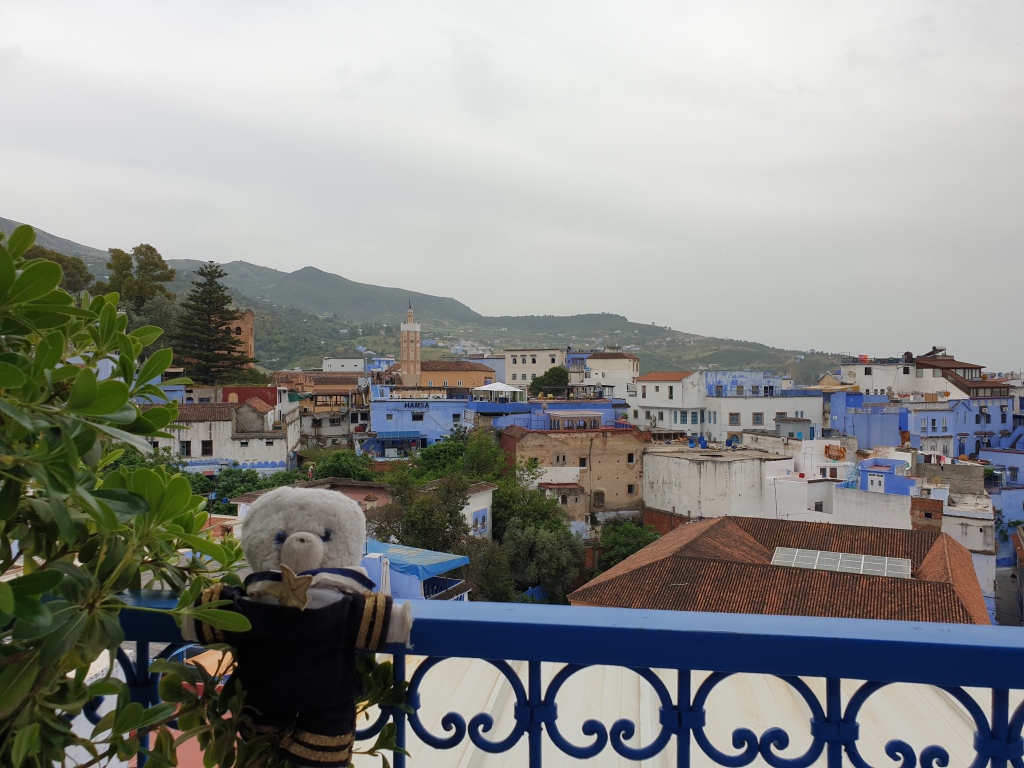
Dinner was in a smart and busy restaurant. Usually, busy places are safe to eat in, but during the night I was struck by the dreaded “Morocco belly”. I passed an uncomfortable night and woke up the next morning wondering how I would manage the 2 hour drive to Tangier if I needed to run to the toilet every ten minutes.
The blue town is very pretty and I was amused by the cooking system for oranges!
LikeLike